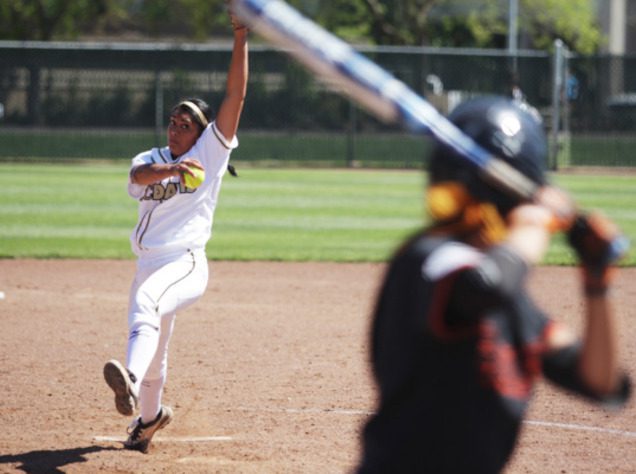Five Popular Pitches Of Softball
As the old adage goes, variety is the spice of life, but, coincidentally, it’s also the key to being an effective softball pitcher! For many pitchers starting out, they’ll most commonly rely on just one type of throw, the fastball — which, in a lot of ways, can usually be simplified down to hurling it as fast as possible. Unfortunately, as you get older, the batters you’ll face become far more talented and you’ll need to have a solid command of multiple types of pitches.
As you develop into a more complete player, your softball training should include practicing five of the sport’s most popular pitches. However, it’s important to note that knowing these pitches doesn’t necessarily mean you should overuse them — the most crucial step towards becoming a successful pitcher is managing your arsenal effectively. Keeping batters off-balance and guessing can elevate a pitcher’s game to a new level altogether. Thankfully, CoachUp has put together a list of softball’s five most-often used pitches, can you master them all?
The Fastball
Naturally, the first thing a pitcher learns how to do is throw hard. That, in fact, is a staple of the position, if you can’t consistently hit high marks, talented batter will eventually get a piece during an at-bat. This pitch should be the main focus of your softball training as you want it to be your most devastating weapon.
Due to how much closer the softball mound is to home plate compared to baseball, a 70 MPH softball pitch is equivalent to a 95 MPH pitch in baseball. To get the most out of your fastball, you’ll want to grip the ball across the laces with your fingertips, utilize your legs for maximum power, snap your wrist upon release, and finish your follow through so that your arm is at chest height.

The Change-up
Typically, your next most important pitch will be the changeup. Given that most pitchers use their fastball the most, any advanced pitcher will need an effective changeup to keep hitters off-balance. To throw this pitch, hold the ball deeper in your hand and fully grip your fingers around the ball. When releasing the ball, don’t snap your wrist — but still make sure to follow through completely. If you can catch a batter expecting a fastball, she will swing far too early and give you an easy strike. The biggest key to this pitch is being able to subtly change the dynamics of the throw without making it look entirely too obvious to the batter. The more it looks like a fastball in form, style, and substance, the better.
The Drop Pitch
The drop pitch is tricky pitch used to fool hitter’s by its namesake — watch as the floor falls out from under it! It’s thrown using nearly the same motion as the fastball, but instead, grip the ball aligned with the laces. You’ll want to keep your elbow tight, stand tall, and snap the ball off your fingertips as you release it. The aim of this pitch is to create a downward spiral, effectively fooling the batter when the ball is suddenly inches below their bat.

The Curveball
The curve ball utilizes the same grip as the drop pitch, but you will twist your wrist as you release the ball. This will cause the ball to spin and make it difficult for batters to track and hit. By the time they’ve effectively analyzed where the ball is and where it’s headed, it’s often far too late for even the best hitters to get a good swing.
The Curve and Drop pitches are also incredibly effective in framing the plate. As any good pitcher knows, they cannot just simply power fastball after fastball by hitters and hope for constant strikeouts, they must be able to freeze them as well. These pitches, if done correctly, will do exactly that — by the time they’ve hesitated and decided if it’s a ball or a strike, they’ve already lost.
The Rise Ball
The final and most difficult pitch to master is the rise ball. For this pitch, hold the ball with your middle and ring finger at the spot on the ball where the laces are closest together. Dig your ring finger into the lace, placing your them on top of the ball as you begin the release. Then, you must quickly twist your hand so that your palm is facing up as you the ball leaves your hand to create the rising movement you’re looking for.
This pitch is great during any at-bat in which the batter is behind the count. If a potential third strike awaits them, a batter will be particularly invested in protecting the plate, content to foul pitches off until she sees something she likes. However, the rise pitch will often appear as if it’s right down the middle, tempting the hitter to swing, but before long, it’s up above the letters and in a much tougher position to hit.
(Related: Read about throwing a fastpitch softball here.)
Huddle Up
Mastering these pitches won’t be easy and it will take years of diligent practice to even feel comfortable enough to break them out in a serious environment. However, If you can confidently use all five of these pitches, you’ll strike fear into the hearts of opposing batters. Having a complex and varied arsenal to worry about is a batter’s nightmare, so make it a reality. Start with the fastball and progress down the list of pitches until you feel ready to throw the more complicated pitches. Finally, be sure you’re not overusing these throws and causing damage to your arms, especially if you’re a young pitcher. It’s particularly easy to endure lasting pain and damage when throwing these complicated motions over and over — so protect yourself!
If you’re still having trouble with these pitches, consider hiring one of CoachUp’s private trainers to help you out. Our team’s vast knowledge and expertise will have you blazing fastballs and then making them look silly with the curve in no time — what are you waiting for?
CoachUp is the safest and easiest way to find a coach for personalized training. With our 100% money-back guarantee and vetted coaches, anyone can achieve their full athletic potential. Find your perfect coach today and become the athlete you want to be!
How useful was this post?
Click on a star to rate it!
Average rating 4.2 / 5. Vote count: 33
No votes so far! Be the first to rate this post.




One Response
I love the way yall organized!! by the way, the softball part is my favorite!!